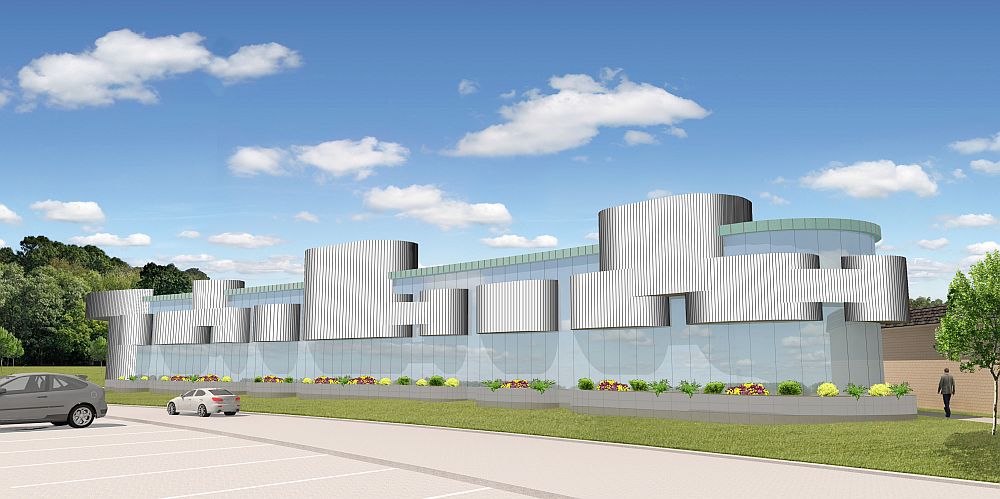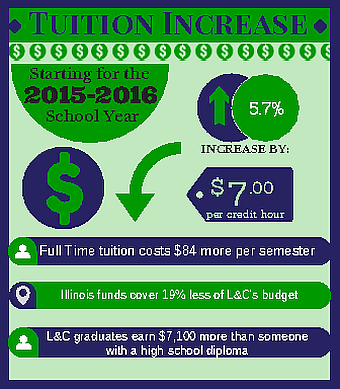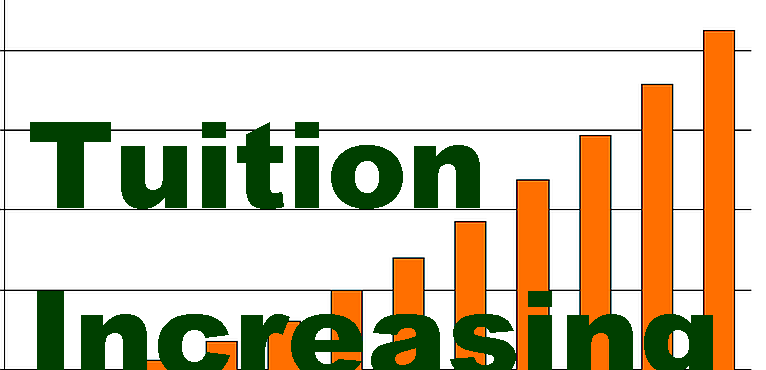
Design from AAIC Inc.
Eric Welch
Staff Writer
The 2015 fall semester will see a tuition and athletic fee increase of $7, which brings the total charge, per credit hour, to $128.
“In terms of cost to attend, Lewis and Clark is at the midpoint among the other 48 community colleges in the state of Illinois, and I believe that what we offer at Lewis and Clark in terms of the quality of an educational experience ranks among the best in the state,” said Lewis and Clark President Dale Chapman.
The annual Lewis and Clark Community College budget is generated primarily from three sources: Illinois state funding, property taxes collected from the district and student tuition.

In the past, each source accounted for about a third of the budget, but certain deficits made it necessary to make changes in funding. Over the last five years, state funding has decreased from 35 percent of the budget to 19 percent.
A fourth, smaller, source of revenue also exists, which takes the form of grants, supplied by affluent individuals and private organizations. This money is given normally on the condition that it is to be spent on a specific purpose, which prevents the school from using the funds elsewhere.
An example of this would be the Calvin Whitlock Scholarship. It is a grant specifically designed to help pay tuition of L&C students, provided that they were born in Jersey County.
The new Welding building being constructed is also being funded by a grant from Ed Webber.
Even though student fees haven’t been raised in five years, this will naturally impact students who pay for college without financial aid. Starting fall 2015, a full time student will see a tuition increase of approximately $84 per semester, depending on credits taken.
“It’s going to make a difference from what I am paying now. I don’t know why they would increase it, it’s already high enough,” Dental Hygiene major Stacy Benitez said.
In addition to initial funding for the annual budget, the school also attempts to save money by prioritizing student retention.
This is mostly done by the Student Success Center and the tutoring programs. When a student drops a class, money has to come out of the school budget as a result.
Fewer students dropped classes this academic year as opposed to the year prior, which kept $113,000 from being spent on retention.
The money saved this year along with the tuition increase, will be used to expand the number of classes offered to students.
“A 2013 economic impact study demonstrated that a graduate from Lewis and Clark can expect an additional $7,100 in annual earnings over someone with a high school diploma or equivalent. Over a working lifetime, this increase in earnings amounts to a value of more than $290,000 in higher income,” Chapman said. “So, for every $1 invested in an L&C education, students receive a return of $7.20. That’s an annual rate of return of 28.5 percent. I can’t think of a better investment someone could make.”
For more information on the statistics behind the tuition increase view Lewis and Clark Community College’s institutional profile on IPEDS website at http://1.usa.gov/1BEeFD4.
Contact Eric at etwelch@lc.edu




